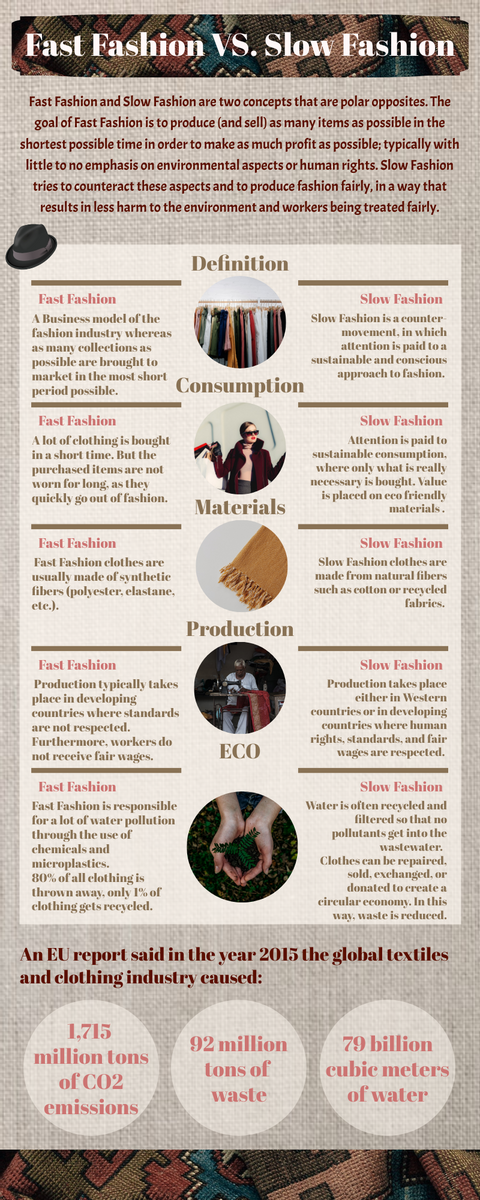Fast Fashion VS. Slow Fashion Infographic
Introducing the “Fast Fashion vs Slow Fashion” infographic created with Visual Paradigm Online, a powerful online infographic maker and graphic design tool. The infographic presents a comparison between the fast fashion and slow fashion industries, highlighting the benefits and drawbacks of each. This design provides businesses and organizations with an easy-to-understand illustration of the fast fashion vs slow fashion debate.

Bring Your Poster Vision to Life with VP Online
The design of this infographic is visually appealing, with a modern and stylish aesthetic. The use of bright colors, icons, and charts makes the information easily digestible, allowing your audience to quickly understand the concepts being presented. The design is also fully customizable, allowing you to tailor the look and feel to fit your brand and message.
Visual Paradigm Online is the perfect tool for creating high-quality infographics like this one. The platform provides a range of templates, icons, and design elements to choose from, making it easy to create professional-looking graphics. You can also collaborate with your team, sharing your designs and receiving feedback in real-time.
Whether you’re looking to create an infographic for your business or organization, or you simply want to customize this design to suit your needs, Visual Paradigm Online has you covered. To find out more about Visual Paradigm Online’s graphic design editor, please follow this link: https://online.visual-paradigm.com/infoart/
To view more graphic design templates, including infographics, please follow this link: https://online.visual-paradigm.com/infoart/templates/
Extended Reading: Fast Fashion vs Slow Fashion
Fast fashion and slow fashion are two different approaches to clothing production and consumption.
Fast fashion refers to the mass-production of clothing and accessories in response to the latest fashion trends, with an emphasis on producing a high volume of clothing at a low cost. Fast fashion companies often use low-cost labor, cheap materials, and a rapid production cycle to produce clothes quickly and cheaply, making them widely available and affordable to consumers. However, this model of production can have negative impacts on both the environment and workers, as well as promoting a culture of waste and disposability.
On the other hand, slow fashion is a movement that seeks to promote sustainable, ethical, and mindful clothing production and consumption. The focus is on quality over quantity, with an emphasis on creating clothing that is long-lasting, durable, and made from sustainable materials. Slow fashion companies often use traditional craftsmanship techniques, and prioritize fair labor practices, environmental sustainability, and transparency in their production processes. The goal is to create clothing that is not only fashionable, but also environmentally and socially responsible.
Fast fashion and slow fashion represent two different approaches to clothing production and consumption. Fast fashion prioritizes low cost and speed, while slow fashion prioritizes sustainability, ethics, and quality. Consumers can support the slow fashion movement by choosing to buy clothing made from sustainable materials, produced by companies that prioritize environmental and social responsibility, and investing in pieces that will last for years, rather than just a few wears.

